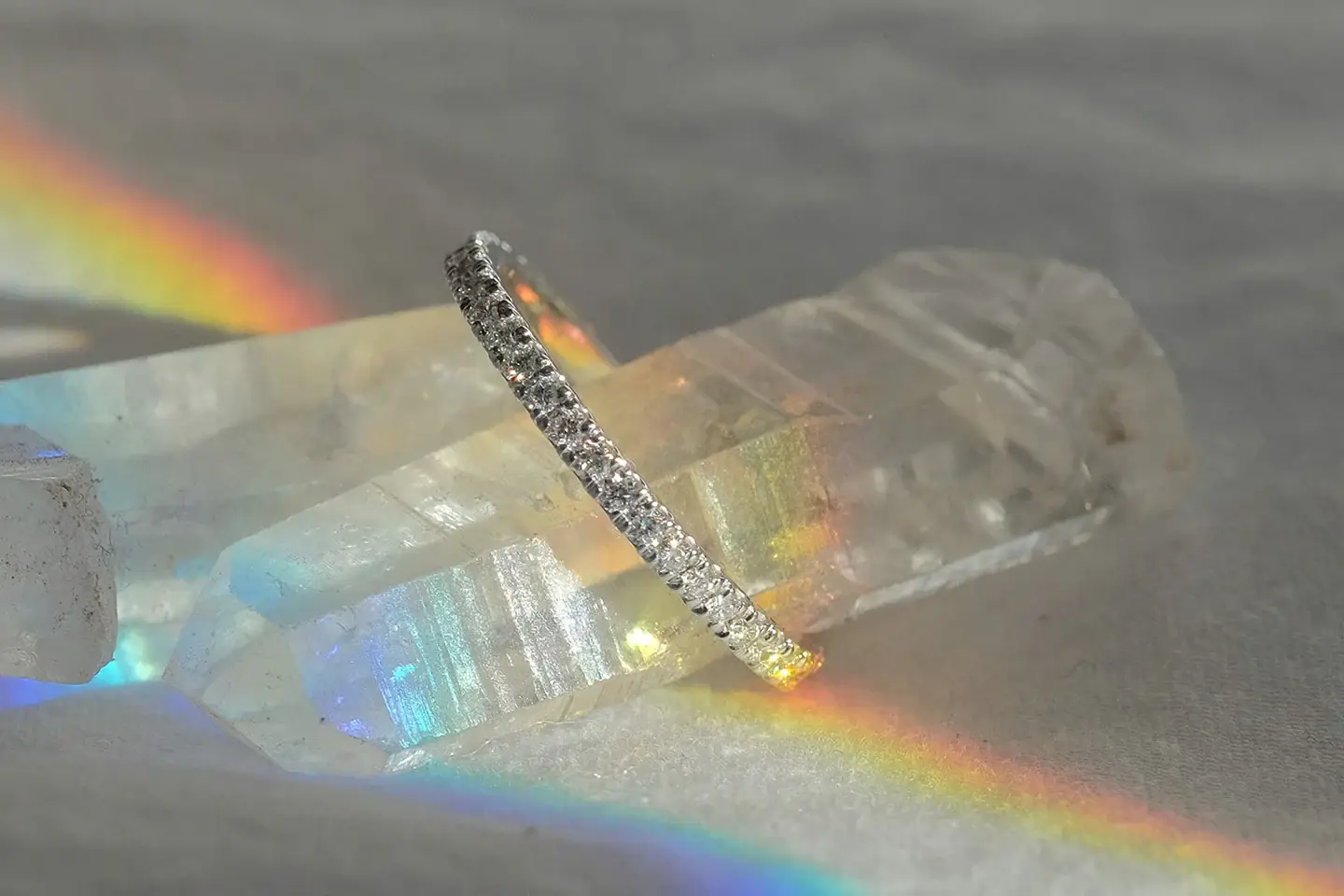
News & Events
What exactly are lab grown diamonds ?

Jewelry shopping can be intimidating. That’s why we started our blog where we answer your FAQs, break down scary industry lingo, and guide you in finding the perfect piece of jewelry.
Lucy’s in the sky with them, they’re (apparently) a girl’s best friend, baseball players run around them, and your roommate has two giant boxes of Diamond Crystal Salt in your tiny apartment. They’re also…forever? Rihanna has instructed us to shine bright like them, but how bright IS bright, Riri?
Diamonds: they’re complicated. How can one small thing symbolize so much, and what exactly makes a diamond a diamond? In this post, we’ll break down lab created diamonds vs natural diamonds, how diamonds are made in a lab, and why we choose to only use lab grown diamonds here at Holden.
Lab Grown Diamonds: The Short Version
In case you’re in a rush, the short version is: lab grown diamonds (sometimes referred to as man made diamonds or lab diamonds) are 100% real diamonds, chemically and physically identical to natural (aka mined) diamonds. The main difference is the origin of the diamond, but the benefits of lab-grown are huge: these diamonds cost less, are more ethically made, and are more environmentally friendly.
Like natural diamonds, lab grown diamonds can even be used for industrial purposes, since diamonds are extremely useful thanks to their high thermal conductivity. Our lab diamond rings are made using cutting-edge technology that duplicates the same growing conditions as within the earth’s mantle.
Over a period of two months, the seeds undergo a series of processes that expose them to a perfect storm of gases, pressure, and high temperature. Layer-by-layer, carbon atoms form upon the seed and eventually crystallize into a rough diamond.
Before we break down the differences in more detail, it might help to do a quick refresh on how natural diamonds are formed, in case your middle school geology unit has eluded you. So pull out some Dunkaroos (or any snack that takes you back) and transport yourself to the seventh grade while we give you the lowdown on diamond formation.
Diamonds
Diamonds are formed deep within the Earth, in what’s known as the mantle, about 100 miles below the Earth’s surface. As you travel closer to the Earth’s core, pressure and temperature increase, which creates the perfect oven for carbon to be converted into diamond (diamonds are the only gemstone to be made from purely one element).
Through a massive volcanic eruption, these diamonds were transported to the Earth’s surface. It’s estimated this process was fairly quick (most likely over the course of several hours), which allowed the diamonds to stay intact without melting. Also, they’re old AF: all the natural diamonds we have today are from 1 billion to 3.5 billion years ago.
Diamonds are mined in one of three ways: pit (heavy machinery blows a massive pit into the earth, then uses the machines to mine), alluvial (riverbeds and banks are panned for diamonds), and marine (a vacuum cleaner-like machine sucks up sediment from the ocean floor to find diamonds). Unfortunately, all three of these methods have the potential for negative environmental impact.
Conflict diamonds (also known as blood diamonds: diamonds used to fund conflict in war-torn areas) have become less prevalent through what’s called the Kimberley Process, but it’s hard to always know if your mined diamond comes conflict-free and responsibly sourced.
How Are Lab Diamonds Made?
In the lab, you can grow diamonds one of two ways: High Pressure High Temperature (HPHT) or Chemical Vapor Deposition (CVD). Both processes start with what’s known as a “diamond seed,” a single crystal diamond in a slice about as thick as a human hair. Diamonds are grown over the course of several weeks through both processes.
High Pressure, High Temperature: In essence, HPHT is like a mini version of the Earth’s mantle. Over a period of two months, the seeds undergo a series of processes that expose them to extremely high pressures and high temperatures. Like, 5,000 degrees Fahrenheit high. Pure carbon, through the help of a metal catalyst, is converted to diamond through this process, building on the seeds. Fun fact: it’s also possible to use HPHT technology to pump up the vibrancy of a natural diamond.
Chemical Vapor Deposition: CVD, like CBD, is trending. Think of it sort of like 3D printing with gas: hydrogen and methane gases are heated to extremely high temperatures and turned into plasma that sprinkles tiny carbon pieces onto the diamond seed, Salt Bae style, ultimately growing a diamond.
